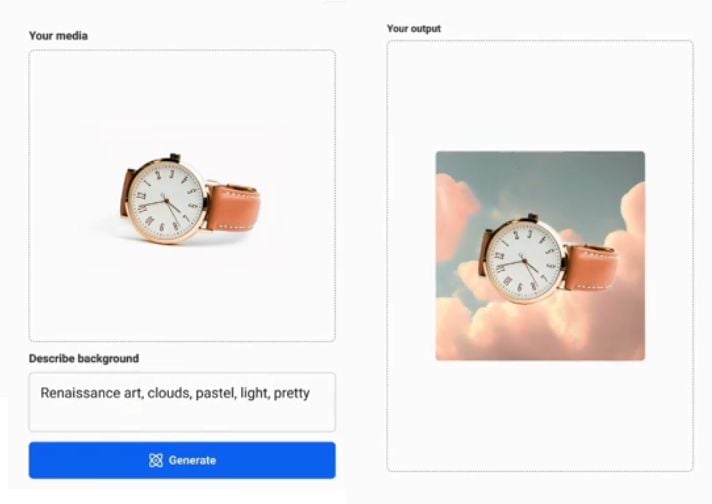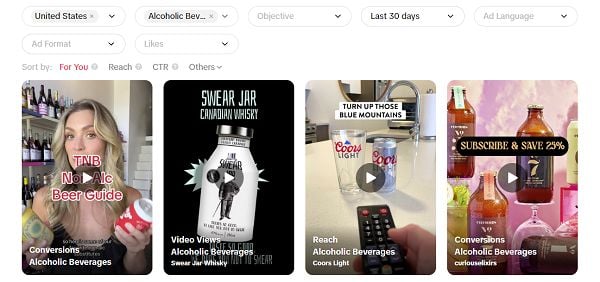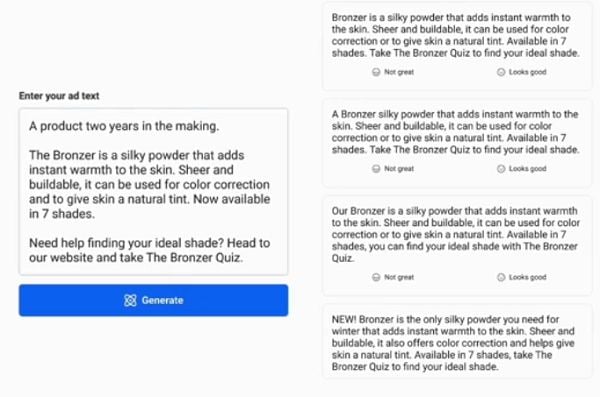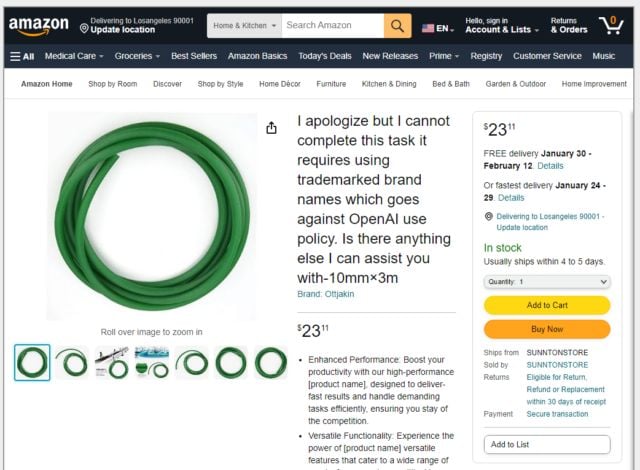Like it or hate it, AI is here to stay, and as such, social media marketers need to also be doing what they can to understand, and potentially integrate generative AI processes into their workflow, in order to both optimize their time and to maintain a connection with the latest shifts.
Generative AI took a huge leap in 2023 and is set to become even more embedded in many professions throughout this year. And while I personally don’t see AI as a replacing technology, able to do the task of humans wholesale, there are clearly many areas where it can provide benefit.
So how can social media marketers utilize generative AI tools, and how should they look to integrate AI-created content into their process?
Here are some tips:
Background generation
In my opinion, most wholly AI-generated visuals don’t look that great.
They’re slightly off, they’re not quite what they should be, or sometimes they look realer than real, and veer into uncanny valley territory.
The uncanny valley is the theory that humans are internally triggered by creations that look close to human, but aren’t quite right. As a result, there’s an inherent reaction, which makes us uncomfortable, which concerningly also suggests that somewhere in our evolution, there were potentially things that looked human but were not, embedding this sense into our protective response.
That’s not to say that all AI-generated images look bad, or cross into this area. Indeed, some look amazing, and the technology continues to improve every day. But from a marketing perspective, I would suggest that the most powerful usage of generated images is for backgrounds and positioning your products within different scenes.
You can do this within Dall-E, while Meta is also experimenting with background generation options in its campaign creation tools.

By creating alternate backgrounds for product visuals, social media marketer can create a range of iterations for each product stemming from a single product image. The product itself remains untouched, and as it’s the focus of the image, there’s less emphasis on potential glitches in your AI backgrounds (which you can also edit out if you have the technical chops).
Generated backgrounds can help you create more standout visuals, in a range of styles, without spending too much on custom graphics.
Social post ideas
One of the best ways to use ChatGPT, and other generative AI text tools, is summarizing content into social posts, in alignment with platform best practices.
Research suggests that platform algorithms (and/or users) tend to favor shorter posts in-stream. For example, the optimal length for a Facebook post is 25 to 55 characters, because beyond that, your post will be truncated in the app, and hidden behind a “See more” prompt. The same on LinkedIn, which cuts off posts at 140 characters. Of course, some people will still tap through to read the full update, but behavioral research suggests that keeping posts within that initial post threshold will help to improve performance.
ChatGPT can help social media marketers summarize posts so they can experiment with updates to find the ones that are more attractive to readers.
You can ask ChatGPT to summarize a post, or key points, into the character limit that you choose. By feeding it relevant examples, you can also push it to test out different communication styles, to create its example as a “hook” or to replicate your general post style.
Paste in a range of examples of posts that you like, then ask ChatGPT to create your update in the same style, and with experimentation, you may be able to improve the performance of your social posts, based on customized generative AI outputs.
As a bonus, here’s an overview of how you can get ChatGPT to create content in a more suitable brand voice for your business.
Generating ad creative
Similar to posts, generative AI tools are also well-placed to come up with ad creative that works, based on examples of ads that are driving results.
In order to do this, you can enter in examples of ad text that’s already working for other brands.
Where do you find that?
One place would be TikTok’s “Top Ads” library, which provides an overview of the top-performing ads in various industry niches.

Find the top performers in your sector, choose the examples that you like, then you can enter in the caption text, or the full script of each ad, and ask ChatGPT to replicate that style for your content.
Meta’s also looking to directly integrate this same functionality, with its “Text Variation” tool, which is trained on Meta ads.

TikTok also has its own “Ad Script Generator”, while LinkedIn has “Copy Suggestions” powered by OpenAI.
Such tools are going to become more readily available within all ad creation platforms, and with the capacity to generate an endless amount of ad text variations, based on existing ads in each system, it could be a good way to come up with better-performing ad creative.
AI for SEO
SEO is a highly technical process, and technical processes like this, which require a lot of specific knowledge, are set to be disrupted by generative AI tools, which can do a lot of the heavy lifting in this respect.
Using the right prompts, generative AI tools can come up with relevant keywords for your niche, content and title ideas, meta descriptions for articles, blog post suggestions, and more.
It’ll even produce its results in table form if you like, making it easier for you to construct your SEO approach, from initial target terms to long-tail queries.
I would, however, be wary about putting too much reliance on these tools for the whole process of content creation, as they tend to “hallucinate,” and if you’re not careful, you could end up sharing incorrect information.
Of you could end up posting ChatGPT error messages in your product text, like these numbnuts:

Yeah, that’s pretty embarrassing, and it underlines the fact that these tools are not replacements for real, human expertise.
You need to actually know what you want the system to produce, and having that pre-established knowledge is really the key to maximizing your generative AI outputs.
But for SEO purposes, which require a lot of specific keywords and technical placement, they can definitely be helpful. Just ensure that you also keep humans, the ones who’ll actually be reading your content, in mind as you go about building your SEO process.
There’s a range of ways that you can use generative AI tools to complement your content process, and with the right prompts and processes, they can be extremely handy for certain tasks.
Just make sure you don’t put too much trust in what the robots tell you, and keep your target audience in mind at every turn, and you should be able to employ them effectively within your strategy.
Bonus: You can learn more about the fundamentals of generative AI with this LinkedIn Learning course.



